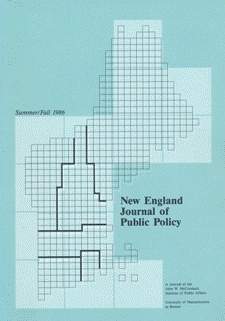Volume 2, Issue 2 (1986)
In recent years, New England has done itself proud. The chronic post-World War II decline in its manufacturing sector has been replaced by what for the present at least continues to be a record growth in services directly and indirectly related to high technology and a continuing competitiveness in high technology itself. As a result, the region leads the nation in growth in per capita income and enjoys the lowest level of unemployment in the country as well. Self-congratulation, however, is too often a prescription for complacency, and complacency inhibits the kind of searching inquiry which assumes that economic miracles are not the result of a divine intervention by a benign providence partial to the presumed moral superiority of New Englanders but the product of complex decisions, themselves often based on imperfectly understood relationships between social, economic, political, and cultural variables.
This issue of the New England Journal of Public Policy examines the nature of some of these relationships and illustrates how aggregate data are potentially misleading indicators of social and economic performance and especially inappropriate tools for formulating and evaluating public policy questions.
Front Matter
Editor's Note
Editor's Note
Padraig O'Malley
Articles
Poverty Amid Renewed Affluence: The Poor of New England at Mid-Decade
Andrew M. Sum, Paul E. Harrington, William B. Goedicke, and Robert Vinson
Managing Change: Reflections on Innovation in the Public Sector
Ira A. Jackson and Jane P. O'Hern
The Reclamation of Boston Harbor: A Scientist's Perspective
Gordon T. Wallace Jr.
Imagining Boston: The City as Image and Experience
Shaun O'Connell
Back Matter

Editors
- Editor
- Padraig O'Malley
- Book Reviews
- Shaun O'Connell
- Copy Editor
- Toni Jean Rosenberg